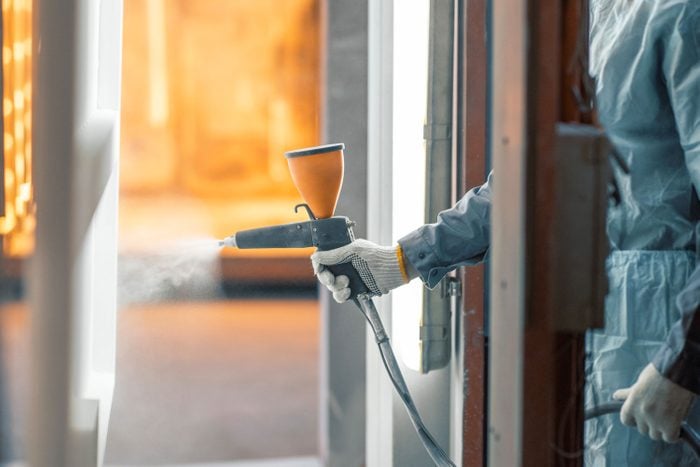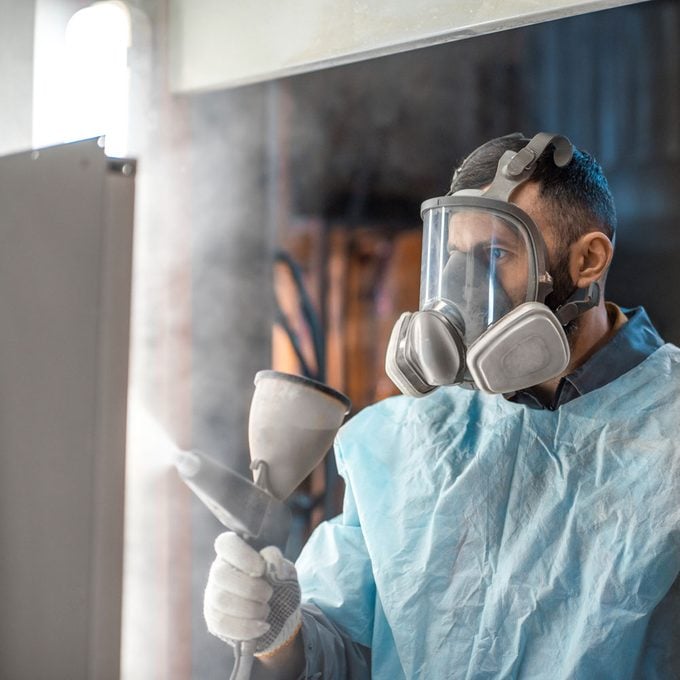What Is Powder Coating?
Updated: Sep. 25, 2023

Powder coating turns drab automobile parts, bicycle frames and other materials into works of art, while offering superior wear and scratch resistance.
Our editors and experts handpick every product we feature. We may earn a commission from your purchases.
Except maybe for chrome or nickel plating, nothing beats a powder-coating finish. It’s like jewelry for car parts!
Powder coat is a dry paint similar in texture to baking flour. After it has been heated and cured, powder coating produces much tougher finishes able to withstand extreme weather conditions while resisting fading and cracking like traditional paints.
On This Page
How Is Powder Coating Used?
Powder coating is applied with specialized equipment using an electrostatic spray-painting process. During the electrostatic painting process, the part being coated is grounded with a negative (-) charge, while a high volume/low-pressure powder coating gun positively (+) charges the powder coating. The static charge creates a strong bond between the coating and the surface being coated, as well as clinging better to odd shapes and vertical surfaces. This process virtually eliminates drips and runs, resulting in minimal variations between horizontal and vertical finished surfaces.
Powder Coating vs. Paint
Powder coating can fully cure in less than a day. During curing, powder coating melts and quickly, completely, and thoroughly fills microscopic holes (called porosity in metals). A smooth, hard-wearing, thick and strong barrier against moisture-causing rust is formed.
Conventional paints use a liquid solvent (carrier) that evaporates and can take seven days to a month to fully (chemically) cure. Slower drying solvents reduce paint durability, appearance, adhesion and corrosion-fighting properties.
Powder coatings’ shorter curing times also lessen the chance of “orange peeling” and other common paint failures, such as bleeding, blistering and cracking.
Powder Coating Pros and Cons

Similar to other finish coatings, powder coating has advantages, disadvantages, benefits and limitations. Powder coating acts as an efficient and decorative surface coating but may not be suitable for all applications.
Pros
- Durable: Long-lasting and extremely durable, powder coating’s hard, tough, uniform thickness and impact-resistant finish provides a superior protective barrier against daily wear and tear, moisture, salt air and chemicals than similar thickness coatings.
- Colors and textures: Powder coating is available in hundreds of colors, textures and finishes.
- Versatile: Primarily used for metals, newer powder coatings can be used on any surface that can be pre- and reheated to 400 degrees. Non-metallic materials, such as wood, glass, car parts made from composites like high-density polyethylene plastic (an engine intake manifold, for example) and even medium-density fiberboard can be powder coated.
- Lower operating cost: Quick curing times, no need for primer or second coat, and overspray and excess material that can be recycled or reused makes powder coating affordable. According to Marc Heaton from Professionals Painters Guide, while two-thirds of sprayed powder coating adheres to the surface, nearly two-thirds of sprayed paint goes to waste.
Cons
-
- Start-up costs: Special equipment to apply and cure powder coating can be expensive.
- Curing: For proper adhesion and finish, the entire piece must be evenly heated without temperature fluctuations, so paint polymers and pigment properly activate. This is something a heat gun or infrared lamps cannot do.
- Application: Although easy to use, applying a thin coat of powder coating is difficult and not practical for parts having close tolerances.
- Custom colors: Unlike paint, you can’t mix powder coatings to create a custom color.
- Touch-ups: Chips are difficult to touch up and may require the entire piece to be re-coated. If chipped down to bare metal, touching up with automotive paint can help prevent rust damage, but may not color match, fully fill or cover the blemish.
Is Powder Coating DIYable?
It depends. If you have the space, good ventilation and are willing to make the initial financial investment, powder coating can be DIY. There are reasonably priced at home DIY kits, but the oven to cure the finish poses a problem.
Most DIYers use a dedicated toaster type oven to cure powdered coated parts. But that limits the size of the parts you can coat. You can also use an everyday kitchen oven. However, neither oven can be used to cook food ever again. Although powder coating does not give off toxic fumes while being applied, harmful vapors and chemical compounds released during the curing process are health hazards.
Environmental and Health Impact
According to the U.S. Environmental Protection Agency (EPA), powder coat is a non-hazardous waste, unlike solvent-based coatings that use volatile organic compounds (VOCs). VOCs have been linked to certain health conditions, and without them, powder coating is a cleaner and safer spray-finishing process that’s not possible with liquid coatings. However, note that although it is non-flammable, powder coating can support fire when finely atomized, just like powders, flour or dust.
Most importantly, according to the U.S. Department of Labor, Occupational Safety and Health Administration (OSHA) standards, proper personal protective equipment (PPE) is essential when working with powder coating. Wearing eye protection, a respirator, gloves, and a coverall paint suit prevents powder coatings’ fine particles from entering your eyes, or getting trapped in your lungs or skin. PPE greatly reduces the possibility of eye and skin irritation as well as respiratory inflammation or infection.
